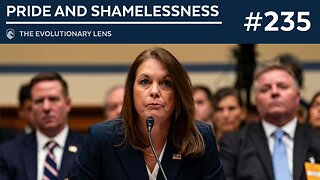CIA Archives: The Lie Detector (1954)
Lie detector testing, also known as polygraph testing, has been a controversial topic since its inception in the early 1900s. By the 1950s, polygraph tests had become a commonly used tool in law enforcement, particularly in criminal investigations.
During the 1950s, the use of polygraph testing was portrayed in popular media as a foolproof method for identifying deception. Films and TV shows often showed detectives administering polygraph tests to suspects, with the results being presented as definitive evidence of guilt or innocence.
However, the accuracy of polygraph testing was already being called into question by some experts. A report by the National Academy of Sciences in 1953 highlighted the potential for false positives and false negatives in polygraph tests, as well as the fact that physiological responses could be caused by factors other than deception.
Despite these concerns, polygraph testing continued to be used extensively in law enforcement during the 1950s. The tests were seen as a valuable tool for obtaining confessions from suspects, and they were also used in employee screening and other contexts where honesty was deemed important.
The use of polygraph testing in the 1950s reflected a broader cultural belief in the power of science and technology to solve complex problems. Polygraphs were seen as a cutting-edge technology that could help law enforcement agencies to solve crimes and identify guilty parties.
However, the limitations of polygraph testing were also becoming increasingly apparent during this period. As scientific research on the accuracy of polygraph tests continued to grow, many began to question the reliability of this method for detecting deception.
Overall, the 1950s represented a period of both widespread use and increasing skepticism of polygraph testing. While the tests were widely used in law enforcement and other contexts, questions about their accuracy and reliability were beginning to emerge, setting the stage for continued debate about the use of this controversial technology in the years to come.
-
 59:00
59:00
The Memory Hole
3 days agoFormer Attorney General on U.S. War Crimes
600 -
 4:11:21
4:11:21
Fed Reacts
5 hours agoFed Reacts To FBI Testimony on Trump Assassination & Netanyahu Speech
33.1K16 -
 2:01:40
2:01:40
Darkhorse Podcast
5 hours agoPride and Shamelessness: The 235th Evolutionary Lens with Bret Weinstein and Heather Heying
30.3K52 -
 2:20:25
2:20:25
WeAreChange
4 hours agoSIRHAN SIRHAN 2.0: Hypnotherapist Reveals MKUltra Makings Of Would-Be Trump Assassin?!
42K12 -
 1:58:54
1:58:54
Revenge of the Cis
3 hours agoLocals Episode 169: The Boss Called
22.9K1 -
 2:22:43
2:22:43
The Quartering
6 hours agoKamala Coup BLASTED By Woke Left, Insurrection At The Capitol & WILD New Trump Poll Data!
81.4K84 -
 1:20:10
1:20:10
Mally_Mouse
3 hours agoLet's Yap About It - LIVE
33.7K5 -
 15:35
15:35
Dr Steve Turley
3 hours agoYou Won't BELIEVE What Congress Did to Nancy Pelosi!!!
49.4K23 -
 2:09:33
2:09:33
Midnight's Edge
8 hours agoThe biggest shareholder abandons Disney, on the eve Deadpool vs Wolverine | MEiTM #591
70.8K10 -
![LIVE Replay - Honor of Kings Wednesday [7/24/2024]](https://hugh.cdn.rumble.cloud/s/s8/1/1/u/l/2/1ul2s.0kob-small-Honor-of-Kings-Wednesday-72.jpg) 1:08:14
1:08:14
JTtheSG
8 hours agoLIVE Replay - Honor of Kings Wednesday [7/24/2024]
35.2K